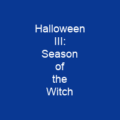A jack-o-lantern is a carved pumpkin, turnip, or other root vegetable lantern associated with Halloween. Its name comes from the phenomenon of a strange light flickering over peat bogs. The name is also tied to the Irish legend of Stingy Jack, a drunkard who bargains with Satan and is doomed to roam the Earth.
About Jack-o’-lantern in brief

In the 19th century, turnips or mangel wurzels, hollowed out to act as lanterns, were used on Halloween in parts of Ireland and the Scottish Highlands. In these Gaelic-speaking regions, Halloween was also the festival of Samhain and was seen as a time when supernatural beings, and the souls of the dead, walked the earth. It is believed that the custom of making jack-‘o-lansterns at Hallowe’en time began in Ireland. In 1837, the Limerick Chronicle refers to a local pub holding a carved gourd competition and presenting a prize to the best crown of Jack McLantern. There is also evidence that turnips are used to carve what was called a \”Hoberdy’s Lantern\” in Worcestershire, England, at the end of the 18th century. Adaptations of Washington Irving’s short story The Legend of Sleepy Hollow often show the Headless Horseman with a pumpkin or pumpkins in place of his severed head.
You want to know more about Jack-o’-lantern?
This page is based on the article Jack-o’-lantern published in Wikipedia (as of Nov. 14, 2020) and was automatically summarized using artificial intelligence.







